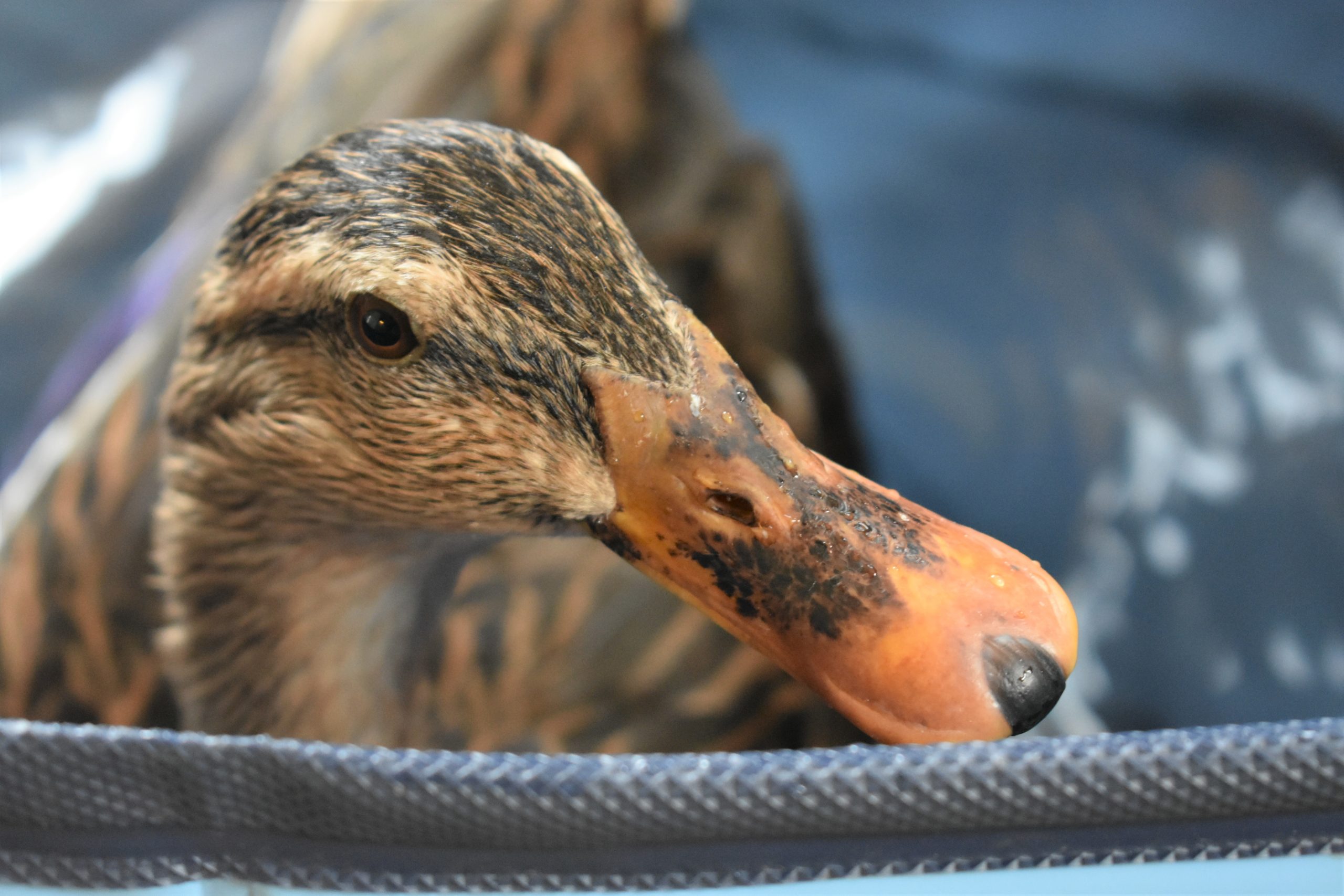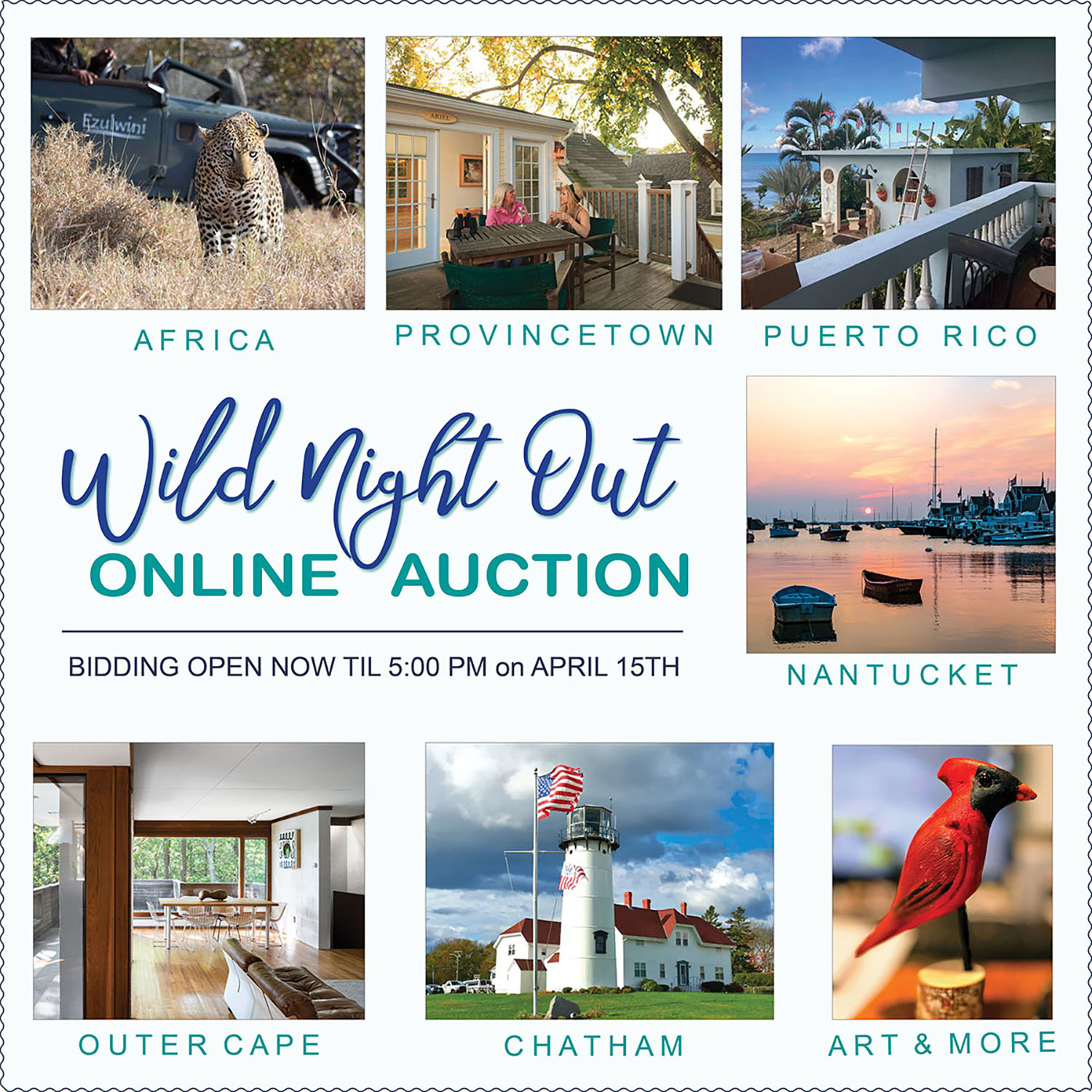
A “True” Duck Tale
Adventures of a Wild Care Volunteer, by Amy Sanders
Confession: This true tale takes place long before my work with Wild Care, and in fact, before I even knew about Wild Care. I actually have many tales to tell, and when I retired early from teaching and indicated a desire to find a volunteer position I could develop a passion for, every single person in my family suggested Wild Care. I’m not even sure when this actually occurred, but I’m guessing in the 1990s when I was a much sturdier gal than I am today, and so my Disclaimer: Don’t try this at home, please!
Not too long after I moved here year round in 1987 (my ancestors have lived on my land since the late 1600s, but for me it was a summer place as my folks worked in CT), I took myself to the beach to watch the waves after a storm had passed. While many people prefer sunny bright beach days, I actually have always loved a moody beach.
It was probably an October weekend, mid-day with thick, heavy clouds, but I think not raining. The waves were not the expected washing-machine sort, but rather well formed and quite tall. So, I sat down in the damp sand to watch for a bit. In those days, I was an avid body surfer and the waves were perfect. However, it was cold and I had no wetsuit, so I didn’t seriously ponder going in, but I was enjoying watching. The water and the air were full of our fall seabirds, dodging about catching snacks from amongst the debris of the just-departed storm.
I spotted a female duck uncharacteristically close to shore (I can’t really tell many of the female ducks apart, so I have no idea what kind of duck I was looking at). The tide had been low and was now coming in. This duck didn’t seem to be interested in leaving even though waves were significant. She just dove under each one, popping up again on the other side.
But after a while, I noticed that not only was she not leaving, but she wasn’t surfacing very well either. She only came fully afloat in the shallowest lull between the waves. Otherwise, I was really just looking at her neck and beak. It soon became clear to me that in some way, she was attached to the bottom, and as the tide came in she was going to drown.
But its October, and cold, and I have no wetsuit or even a bathing suit! I can’t let a creature drown while I am watching. So I stripped off my coat, and got myself down to my jeans and t-shirt, and headed in the water.
It was incredibly cold (!!), and as soon as I got close enough to possibly catch her she would dive. Then, there are those waves. I’m diving again and again, eventually memorizing her position, and diving where I think I last saw her. I was finally able to find a piece of rebar sticking up which was tangled in a piece of fishing line. I assumed this had to be what she was caught on, so I took the line off the rebar and surfaced. Then to reel her in.
And reel her in I did, before leaving the water, lest she get demolished where the waves were hitting the shore. Then duck under one arm, I swam her in to the beach.
She was amazingly quiet at this point. Quiet from relief or terror, I don’t know. But she did not struggle at all. I wrapped my coat around my shoulders, and proceeded for the next at least 20 minutes or so, to slowly disentangle her from the line which was around both legs and both wings. Fortunately there was no hook anywhere, just line. It took quite a while but she never bit or thrashed in any way, which made my job much easier.
My dad arrived as I was nearly completed with the disentanglement. As a teenager, he had worked for Fish and Game in Sandwich, and he knew how to check bird wings and bodies for damages. After a thorough check (and not knowing a thing about any wildlife rescue organization anywhere nearby), we let her go. She sat on the beach for only about a minute before flying off back into the water, presumably to continue fishing, or just rest from her ordeal.
From this type of rescue comes Wild Care’s “Trash Your Tackle” initiative. An amazing number of the rescues we do of seabirds, involve fishing line and/or hooks. I don’t fish, but I do relentlessly pick up all lines, hooks and sinkers (and ribbons and plastic) whenever I see them on the beach, regardless of how much is tangled in the stuff that I also have to carry. I tend to bury hooks into soft wood pieces or found corks for safety, and then move the entire pile of junk to a safe disposal place.
So, I don’t recommend diving for ducks in October, but I do recommend watching every single time you walk the beach for those things that could injure our bird and turtle friends, and kindly remove them for safe disposal. They won’t thank you of course, but we will!
*Mallard photo by Kerry Reid. This is not the duck from the story. This is Ilean, our resident foster duck at Wild Care!
Wild Night Out Online Auction
READY, SET, BID… We are so excited to announce that our Wild Night Out Online Auction is now live!
READ ALL NEWS
CALENDAR OF EVENTS
04 April, 2024
Wild Night Out Online Auction
EVENT DETAILS
05 April, 2024
Wild Night Out
EVENT DETAILS
28 February, 2024
Wildlife Winter/Spring Talk Series
EVENT DETAILS

DID YOU KNOW??
Wild Care has a state-of-the-art seabird therapy pool, which allows seabirds and waterfowl to exercise on running water. This will help our bird friends recover more quickly so they can get back to their watery habitats!

